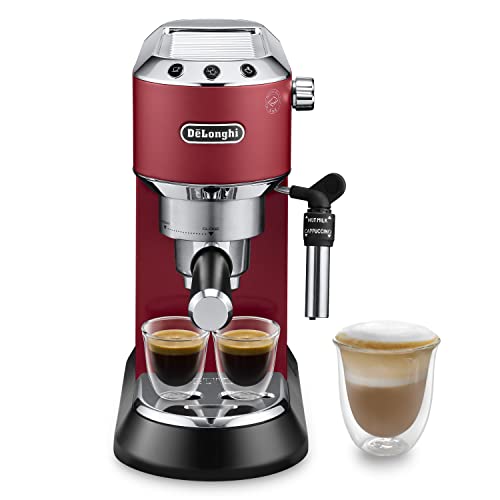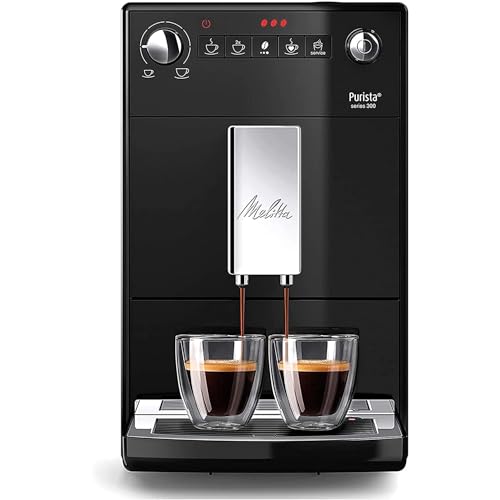The Most Inspirational Sources Of Stainless Steel Espresso Machines
페이지 정보
작성자 Casey Bayles 작성일 25-07-31 05:55 조회 44 댓글 0본문
The Art of Italian Espresso Machines: A Brewed Tradition
Italian espresso machines are not just devices; they are an integral part of Italy's abundant coffee culture, representing a mix of artistry, engineering, and design. Coffee enthusiasts around the globe acknowledge the importance of high-quality espresso, a staple of Italian life and food. This post checks out the history, mechanics, types, and factors to consider when buying an Italian espresso machine, showing the depth of this precious drink and its developing techniques.

History of Espresso Machines
The espresso machine's development go back to the early 20th century in Italy, where coffee was not simply a beverage but a vital social routine. The initial attempts to brew espresso begun with simple, stove-top designs, gradually evolving into complicated machines that might replicate the perfect brew.
- 1901-- The First Espresso Machine: The very first steam-powered espresso machine, called the "Ideale," was developed by Luigi Bezzera. This equipment marked a turning point in espresso brewing.
- 1938-- The Lever Machine: The intro of the lever machine made it easier to control the pressure used in espresso extraction, enhancing taste consistency.
- 1947-- The Automatic Machine: Reaching more consumers, Gaggia released the very first automatic espresso machine (cameradb.review), additional promoting espresso bars.
- 2007-- The Digital Age: Technological advancements resulted in the birth of fully programmable machines, permitting users to personalize their brewing settings to accomplish an individualized coffee experience.
Key Features of Italian Espresso Machines
Italian espresso machines embody accuracy, workmanship, and development. Here are some key parts that highlight their significance:
| Feature | Description |
|---|---|
| Boiler Type | Identifies how heat is created and preserved. Common types consist of single boiler, dual boiler, and heat exchanger. |
| Group Heads | Where the coffee is brewed; commercial machines typically have multiple group heads for performance. |
| Pressure Control | Vital for achieving the ideal espresso; most machines operate at 9 bars of pressure. |
| Frothing Capabilities | The steam wand enables milk frothing, important for beverages like cappuccino and latte. |
| Build Quality | The products used (stainless-steel, brass, etc) influence sturdiness and heat retention. |
Types of Italian Espresso Machines
Choosing the ideal machine depends upon user preferences, budget, and planned use. Below are the primary types of Italian espresso machines:
Manual Espresso Machines
- Pros: Offer full control over the developing procedure, enabling an individualized touch.
- Cons: Require skill and practice, can be labor-intensive.
Semi-Automatic Machines
- Pros: Provide a balance in between automated and manual processes; users manage water flow.
- Cons: Can have a steeper learning curve than fully automatic machines.
Fully Automatic Machines
- Pros: Simplify the developing process with push-button operations; perfect for novices.
- Cons: May compromise some of the subtleties of manual brewing.
Super-Automatic Machines
- Pros: Grind, tamp, brew, and froth immediately; convenient for hectic lifestyles.
- Cons: Less control over the brewing variables, potential for a less authentic espresso experience.
Buying Guide: Factors to Consider
Picking the perfect Italian espresso machine can be challenging, however thinking about the following factors can streamline the decision-making process:
- Budget: Italian espresso machines vary from affordable to high-end models, so set a budget upfront.
- Use Frequency: Evaluate how typically you will use the machine; everyday users might desire a more long lasting choice.
- Area: Measure your kitchen area or counter space; some machines can be large and need enough clearance.
- Upkeep: Consider ease of cleansing; machines with removable parts or integrated cleansing features might lower upkeep.
- User Skill Level: Beginners might prefer totally or semi-automatic machines, while experienced baristas can manage manual machines.
- Brand Reputation: Research brands known for quality, such as Breville, Gaggia, and La Marzocco.
Popular Italian Espresso Machine Brands
Italian craftsmanship is renowned for producing some of the best espresso machines worldwide. Here are top brands worth considering:
- Gaggia: Known for its home espresso machines and price.
- La Marzocco: A premium brand understood for its commercial-grade machines and ingenious technology.
- Rancilio: Renowned for its long lasting build and professional-quality machines suitable for home and commercial use.
- Sage/Breville: Offers advanced functions and user-friendly styles, best for both amateurs and enthusiasts.
FAQs
What is the distinction between espresso and routine coffee?
Espresso is a focused coffee brewed by requiring hot water through finely-ground coffee under pressure. It has a thicker consistency, richer taste, and greater caffeine concentration than routine coffee.
Can I make milk-based drinks with an espresso machine?
Yes, many Italian espresso machines include a steam wand to froth milk for drinks like coffees, lattes, and macchiatos.
How frequently should I clean my espresso machine?
Regular maintenance is essential. Typically, a comprehensive cleaning is advised every few weeks, while descaling ought to be done every 1 to 3 months, depending upon water firmness.
What is the ideal pressure for brewing espresso?
The ideal pressure for developing espresso is around 9 bars. This pressure makes sure the optimum extraction of flavors from the coffee premises.
Are more costly machines worth the investment?
Higher-end machines frequently use better products and technology, supplying improved toughness and more constant outcomes. For severe coffee lovers, purchasing a good machine can raise the espresso experience substantially.
Italian espresso machines are far more than simple brewing gadgets; they are an event of a cultural tradition that has influenced coffee consumption worldwide. With numerous designs available to fit any user's needs-- varying from newbies to seasoned baristas-- there is an Italian espresso machine completely matched for everyone. As you start your espresso journey, comprehending the history, mechanics, and alternatives will enhance your experience and gratitude for this time-honored beverage. Whether you seek to recreate a coffee shop atmosphere in your home or improve your developing technique, these machines are capable of delivering memorable cups of espresso embellished with the rich history of Italian coffee culture.

댓글목록 0
등록된 댓글이 없습니다.

